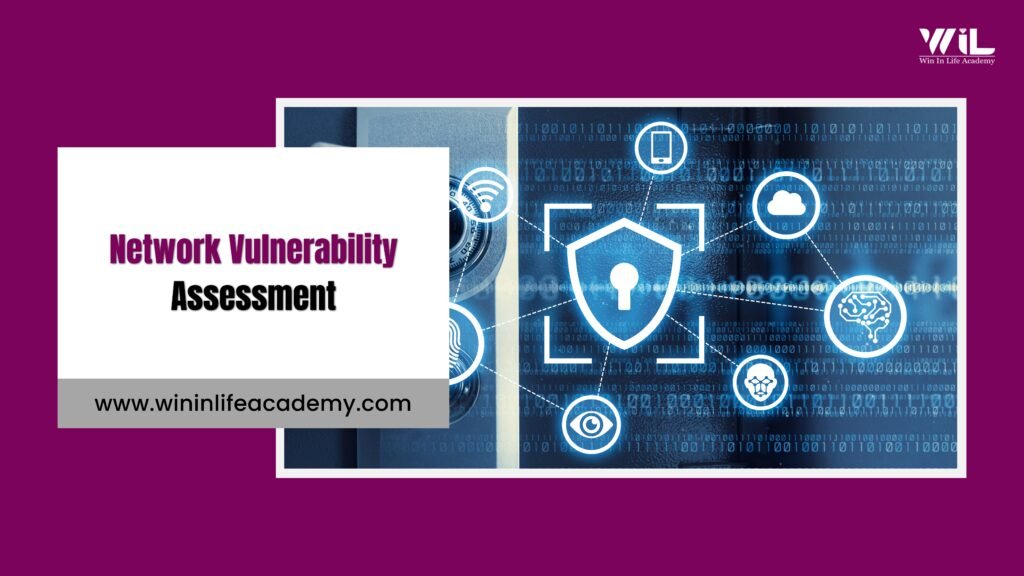The concept of vulnerability assessment stands as a foundational pillar of proactive cybersecurity. Far from being a mere buzzword, it represents a systematic and critical process of identifying, quantifying, and prioritizing the security weaknesses within an organization’s IT infrastructure. For aspiring ethical hackers and seasoned cybersecurity professionals alike, mastering vulnerability assessment is not just an advantage; it is an absolute necessity for building truly resilient digital defenses.
This comprehensive guide will delve deep into the intricacies of vulnerability assessment, exploring its methodologies, diverse applications, and its indispensable role in the broader domain of ethical hacking. We will dissect the core components, illuminate specialized assessment areas like network vulnerability assessment, and underscore its symbiotic relationship with penetration testing. Ultimately, understanding and implementing robust cyber security vulnerability assessment practices is the key to transforming reactive damage control into proactive threat mitigation.
Enroll Now: Ethical Hacking training
Understanding Vulnerability Assessment
At its core, vulnerability assessment is a meticulous examination designed to uncover security loopholes in systems, applications, and networks before malicious actors can exploit them. Think of it as a thorough health check-up for your digital assets, identifying potential ailments before they manifest into critical illnesses. This proactive approach contrasts sharply with reactive incident response, where the damage has often already been done.
The process extends beyond simply finding flaws; it involves:
- Identification: Discovering known weaknesses or misconfigurations.
- Analysis: Understanding the nature and potential impact of each vulnerability.
- Prioritization: Ranking vulnerabilities based on their severity, exploitability, and potential business impact.
- Reporting: Documenting findings clearly and providing actionable recommendations for remediation.
While closely related, it’s crucial to distinguish vulnerability assessment from penetration testing. A vulnerability assessment aims to identify as many vulnerabilities as possible across a defined scope, providing a comprehensive list of weaknesses. Penetration testing, on the other hand, actively exploits identified vulnerabilities to prove exploitability and gauge the real-world impact of a successful attack. Often, a vulnerability assessment serves as a crucial precursor to a penetration test, providing a targeted list of potential entry points for the simulated attack. The synergy between vulnerability and penetration testing forms a powerful defense mechanism.
The urgency for robust vulnerability assessment stems from the escalating volume and sophistication of cyber threats. From ransomware attacks crippling critical infrastructure to sophisticated nation-state sponsored espionage, every organization is a potential target. Without a clear understanding of their vulnerabilities, businesses operate in a state of perilous blind spots, exposed to financial losses, data breaches, reputational damage, and regulatory penalties.
The Core Components of a Robust Vulnerability Assessment

A successful vulnerability assessment is not a single action, but a meticulously orchestrated process comprising several critical phases. Each phase contributes to building a comprehensive picture of an organization’s security posture.
1. Identification of Assets
Before identifying weaknesses, an organization must first understand what assets it possesses and their value. This involves creating a comprehensive inventory of:
- Network devices: Routers, switches, firewalls, access points.
- Servers: Both physical and virtual, running various operating systems.
- Workstations: Desktops, laptops, mobile devices.
- Applications: Web applications, mobile apps, custom software, COTS (Commercial Off-The-Shelf) applications.
- Databases: Housing sensitive information.
- Cloud infrastructure: IaaS, PaaS, SaaS components.
- IoT devices: Connected sensors, cameras, smart devices.
- Data: Personally identifiable information (PII), intellectual property, financial records.
Understanding the criticality of each asset allows for better prioritization of remediation efforts later in the process.
2. Vulnerability Scanning
Many vulnerability assessment processes lie behind vulnerability scanning in cyber security. This phase involves using specialized tools to automatically identify known vulnerabilities by comparing system configurations, software versions, and network services against extensive databases of known flaws. Think of it as an automated X-ray machine for your IT environment, quickly highlighting areas of concern.
Types of vulnerability scanners include:
- Network-based scanners: These tools scan network devices and hosts from a network perspective, identifying open ports, exposed services, and misconfigurations. They simulate an external attacker’s view.
- Host-based scanners: Installed directly on target systems, these scanners provide a deeper insight into system configurations, installed software, patch levels, and local security settings. They offer an internal perspective.
- Application scanners (SAST/DAST):
- Static Application Security Testing (SAST): Analyzes application source code, bytecode, or binary code for security vulnerabilities without executing the application.
- Dynamic Application Security Testing (DAST): Tests applications in their running state, simulating attacks against the application’s external interfaces (e.g., web application scanners targeting OWASP Top 10 vulnerabilities).
- Database scanners: Specifically designed to identify weaknesses in database configurations, access controls, and known vulnerabilities within database management systems.
Automated scanning is highly efficient for covering large environments and identifying common vulnerabilities quickly. However, manual analysis and human expertise are crucial for interpreting results, reducing false positives, and identifying complex logical flaws that automated tools might miss. The efficacy of vulnerability scanning in cyber security heavily relies on regularly updated vulnerability databases and proper configuration of the scanning tools.
3. Analysis and Prioritization
Raw scan results can be overwhelming, often listing thousands of potential vulnerabilities. The analysis phase involves meticulously reviewing these results, eliminating false positives, and understanding the true risk each identified vulnerability poses. This is where human expertise and contextual understanding become paramount.
Key aspects of analysis and prioritization include:
- Contextualization: Understanding the specific environment in which the vulnerability exists. A high-severity vulnerability on a non-critical internal server might be less urgent than a medium-severity flaw on an internet-facing web application handling sensitive data.
- Risk Scoring: Assigning a quantitative or qualitative risk score to each vulnerability. The Common Vulnerability Scoring System (CVSS) is a widely used open standard that provides a numerical score representing the severity of a vulnerability based on its exploitability and impact.
- Business Impact: Assessing the potential financial, operational, and reputational damage if a vulnerability were to be exploited.
- Exploitability: Determining how easy or difficult it would be for an attacker to leverage the vulnerability.
Prioritization ensures that limited resources are focused on addressing the most critical vulnerabilities first, those that pose the highest immediate threat to the organization.
4. Reporting
The output of a vulnerability assessment is a comprehensive report that clearly communicates the findings to relevant stakeholders, from technical teams to executive management. A good report should be:
- Clear and concise: Easy to understand, avoiding overly technical jargon where possible.
- Actionable: Providing specific recommendations for remediation, not just a list of problems.
- Prioritized: Highlighting the most critical vulnerabilities first.
- Contextual: Explaining the potential impact of each vulnerability.
- Audience-specific: Tailored to different stakeholders, e.g., technical details for engineers, executive summaries for leadership.
Effective reporting bridges the gap between technical findings and business risk, facilitating informed decision-making and resource allocation for security improvements.
5. Remediation and Mitigation
This crucial phase involves implementing recommended solutions to address identified vulnerabilities. Remediation can take various forms:
- Patch Management: Applying software updates and security patches released by vendors. This is often the most straightforward and effective method for addressing known vulnerabilities.
- Configuration Hardening: Modifying default settings, disabling unnecessary services, implementing strong access controls, and following security best practices to reduce the attack surface.
- Security Control Implementation: Deploying or enhancing security mechanisms like firewalls, intrusion detection/prevention systems (IDS/IPS), web application firewalls (WAFs), and robust authentication systems.
- Code Fixes: For custom applications, developers must revise and fix vulnerable code.
- Network Segmentation: Dividing networks into smaller, isolated segments to limit the lateral movement of attackers if one segment is compromised.
The speed and effectiveness of remediation are critical determinants of an organization’s overall security posture.
6. Verification
After remediation efforts are implemented, it is essential to verify that the vulnerabilities have indeed been addressed effectively. This involves re-testing the affected systems or applications to confirm that the patches or configuration changes have closed the identified security gaps. This verification step ensures that the effort put into remediation was successful and that no new vulnerabilities were inadvertently introduced. Continuous monitoring, perhaps through recurring vulnerability scanning in cyber security, further ensures that the security posture remains strong over time.
Specialized Vulnerability Assessments
While the core principles of vulnerability assessment remain consistent, their application can be tailored to specific areas of an organization’s IT infrastructure, each presenting unique challenges and requiring specialized expertise.
Network Vulnerability Assessment

A network vulnerability assessment focuses on identifying weaknesses within an organization’s network infrastructure. This includes:
- Network Devices: Routers, switches, firewalls, and other network hardware. Assessments look for misconfigurations, outdated firmware, default credentials, and insecure protocols.
- Wireless Networks: Identifying weak encryption, unauthorized access points (rogue APs), and insecure configurations in Wi-Fi networks.
- Perimeter Defenses: Evaluating the effectiveness of firewalls, intrusion detection/prevention systems (IDS/IPS), and VPNs in protecting the network boundary.
- Internal Network Security: Assessing network segmentation, access controls, and the security of internal communication channels to prevent lateral movement by attackers.
- Denial-of-Service (DoS) vulnerabilities: Identifying weaknesses that could lead to network outages.
Effective network vulnerability assessment is crucial for maintaining the availability, integrity, and confidentiality of data flowing across an organization’s arteries.
Application Vulnerability Assessment
With software being the primary interface for users and data, application vulnerability assessment is paramount. This focuses on identifying security flaws in web applications, mobile applications, APIs, and other custom or commercial software. Key areas of focus include:
- OWASP Top 10: The Open Web Application Security Project (OWASP) Top 10 is a widely recognized list of the most critical web application security risks (e.g., Injection, Broken Authentication, Cross-Site Scripting). Assessments frequently target these categories.
- Input Validation: Ensuring that user input is properly sanitized to prevent injection attacks (SQL injection, XSS).
- Authentication and Authorization: Identifying weak authentication mechanisms, insecure session management, and improper access controls.
- Error Handling: Preventing information leakage through overly verbose error messages.
- Security Misconfigurations: Detecting insecure server configurations, exposed directories, and default credentials.
- API Security: Assessing vulnerabilities in Application Programming Interfaces, which are increasingly targeted.
Thorough application assessment often involves both automated tools (SAST/DAST) and manual penetration testing to uncover complex logical flaws.
Cloud Vulnerability Assessment
The adoption of cloud computing introduces a new set of security considerations. Cloud vulnerability assessment must account for:
- Shared Responsibility Model: Understanding which security responsibilities lie with the cloud provider and which with the customer.
- Misconfigurations: Cloud environments are highly configurable, and misconfigurations (e.g., publicly exposed S3 buckets, insecure IAM roles) are a leading cause of cloud breaches.
- Identity and Access Management (IAM): Assessing the strength of access controls for cloud resources.
- Container Security: Identifying vulnerabilities in Docker containers, Kubernetes clusters, and container orchestration platforms.
- Serverless Functions: Assessing the security of FaaS (Function-as-a-Service) implementations.
Cloud assessments require specialized knowledge of cloud provider services (AWS, Azure, GCP) and their unique security implications.
Database Vulnerability Assessment
Databases are the ultimate target for attackers as they house an organization’s most sensitive and valuable information. Database vulnerability assessment focuses on:
- SQL Injection: Identifying vulnerabilities that allow attackers to execute malicious SQL queries.
- Access Controls: Assessing permissions, roles, and user accounts to ensure data is accessible only to authorized individuals.
- Configuration Weaknesses: Detecting default credentials, unnecessary services, and insecure database settings.
- Patch Management: Ensuring database management systems are up to date with the latest security patches.
- Encryption: Verifying data encryption at rest and in transit.
Protecting databases is paramount to preventing data breaches and maintaining regulatory compliance.
Vulnerability and Penetration Testing
The terms vulnerability assessment and penetration testing are often used interchangeably, but as highlighted earlier, they represent distinct yet complementary security practices. The most robust cyber security vulnerability assessment strategy incorporates both.
- Vulnerability Assessment (VA): Provides a broad overview of known security weaknesses. It is like an eye exam that identifies vision problems. It’s about breadth.
- Penetration Testing (PT): Simulates a real-world attack to validate whether identified vulnerabilities can be exploited and to discover more complex vulnerabilities that automated tools might miss. It’s like a surgical procedure to fix a specific identified problem. It’s about depth.
The typical workflow involves conducting a vulnerability assessment first to identify a wide range of potential weaknesses. The results of this assessment can then inform a more targeted penetration test, allowing ethical hackers to focus their efforts on the most promising avenues of attack. This iterative process of identifying exploring-remediate-verifying is crucial for continuously improving an organization’s security posture. For anyone aiming to be proficient in ethical hacking, understanding both vulnerability and penetration testing is fundamental.
Ethical Hacking: The Proactive Security
Ethical hacking, also known as “white hat,” is the practice of using hacking techniques for legitimate and lawful purposes, specifically to identify security vulnerabilities and improve the security of systems. Vulnerability assessment is a core discipline within ethical hacking. Ethical hackers think like attackers but act with permission and with the intent to strengthen defenses.
An ethical hacker conducting a vulnerability assessment employs a range of tools and methodologies:
- Open-Source Intelligence (OSINT): Gathering publicly available information about the target.
- Network Scanning Tools: Nmap for port scanning and service enumeration.
- Vulnerability Scanners: Nessus, Qualys, OpenVAS, Acunetix, Burp Suite (for web applications).
- Exploitation Frameworks: Metasploit for testing exploitability (though more aligned with penetration testing, it’s often used in conjunction with VA findings).
- Manual Review: Human analysis of configurations, code, and system behavior.
The ethical hacker’s role is not just to find vulnerabilities but to explain their potential impact and provide clear, actionable recommendations for remediation. They adhere strictly to legal and ethical guidelines, ensuring that their actions are authorized and do not cause harm.
Common Challenges in Vulnerability Assessment

Despite its undeniable value, conducting effective vulnerability assessment comes with its own set of challenges:
- False Positives and False Negatives: Automated scanners can sometimes flag non-existent vulnerabilities (false positives) or, more critically, miss actual vulnerabilities (false negatives). This necessitates manual verification and expert analysis.
- Scope Creep: The scope of an assessment can expands unexpectedly, leading to resource strain and delays. A clear definition of scope is vital.
- Resource Constraints: Conducting thorough assessments requires skilled personnel, specialized tools, and time, which can be significant investments for organizations.
- Keeping Up with New Threats: The cyber threat landscape is dynamic. New vulnerabilities, attack techniques, and zero-day exploits emerge constantly, requiring continuous updates to assessment methodologies and tools.
- Remediation Fatigue: Organizations may struggle to keep pace with the volume of identified vulnerabilities, leading to a backlog of unpatched systems.
- Integration with Development Lifecycles: Integrating security testing seamlessly into the Software Development Life Cycle (SDLC) can be challenging but is crucial for building secure applications from the ground up.
Addressing these challenges requires a combination of robust processes, appropriate tooling, skilled personnel, and a commitment from leadership.
Best Practices for a Robust Security Posture
To maximize the benefits of vulnerability assessment and build a truly resilient security posture, organizations should adopt the following best practices:
- Regular and Consistent Assessments: Security is not a one-time event. Conduct vulnerability assessments regularly – quarterly, monthly, or even continuously for critical assets – to keep pace with evolving threats and changes in the IT environment.
- Integrate Security into SDLC (Shift Left): Incorporate security testing, including static and dynamic analysis, early in the software development lifecycle. This “shift left” approach identifies and fixes vulnerabilities when they are cheaper and easier to remediate.
- Automate Where Possible: Leverage automated vulnerability scanning in cyber security tools to cover broad areas efficiently, especially for recurring scans and large environments.
- Focus on Contextual Risk: Don’t just chase severity scores. Prioritize vulnerabilities based on their actual risk to your business operations, considering asset criticality and exploitability.
- Develop a Robust Patch Management Program: Implement a systematic process for applying security patches and updates promptly across all systems and applications.
- Build a Culture of Security: Foster a security-aware culture throughout the organization. Train employees on secure coding practices, phishing awareness, and overall cybersecurity hygiene.
- Continuous Learning and Adaptation: The cybersecurity landscape changes rapidly. Stay informed about the latest threats, vulnerabilities, and security best practices. Regularly review and update your cyber security vulnerability assessment methodologies.
- Document Everything: Maintain thorough documentation of assessment methodologies, findings, remediation efforts, and verification results. This aids in auditing, compliance, and continuous improvement.
Final Thoughts
In an era defined by pervasive digital threats, vulnerability assessment is not merely a good practice; it is an indispensable cornerstone of any effective cybersecurity strategy. From meticulously identifying weaknesses through vulnerability scanning in cyber security to orchestrating comprehensive network vulnerability assessment, the process empowers organizations to proactively strengthen their defenses, mitigate risks, and safeguard their most valuable digital assets. The profound synergy between vulnerability and penetration testing offers a layered approach, ensuring both broad coverage and deep validation of security controls.
Mastering the nuances of cyber security vulnerability assessment is a critical skill for anyone aspiring to build a successful career in the ethical hacking domain. It equips professionals with the foresight to anticipate attacks, the knowledge to pinpoint weaknesses, and the ability to recommend robust solutions. The digital frontier demands continuous vigilance, and the systematic discipline of vulnerability assessment provides the roadmap for achieving enduring digital resilience.
Are you ready to transform your understanding of cybersecurity from reactive to proactive? Do you aspire to become a guardian of the digital realm, capable of identifying and neutralizing threats before they strike?
Win in Life Academy offers comprehensive ethical hacking courses designed to equip you with the essential skills, including advanced vulnerability assessment techniques. Elevate your career and contribute to a safer digital world. Visit Win in Life Academy today to explore our programs and embark on your journey to becoming a certified cybersecurity expert! Your future in ethical hacking starts here.
References
vulnerability assessment
https://www.techtarget.com/searchsecurity/definition/vulnerability-assessment-vulnerability-analysis
What is Vulnerability Assessment?
https://www.geeksforgeeks.org/what-is-vulnerability-assessment
Vulnerability Assessment: Types, Tools, And Processes
https://www.fortinet.com/resources/cyberglossary/vulnerability-assessment






